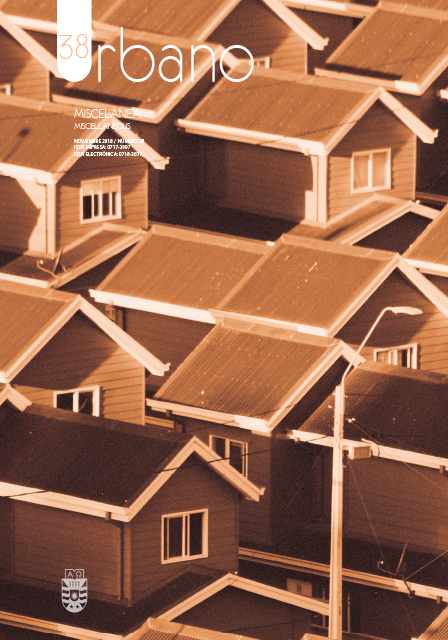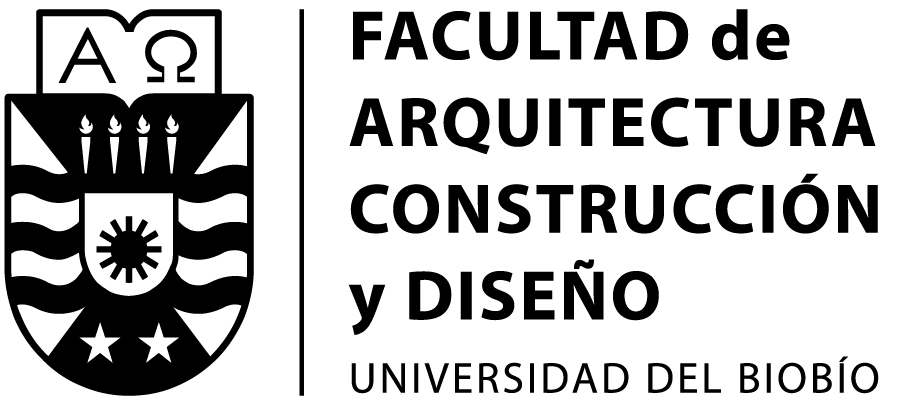Recursos de movilidad y accesibilidad urbana en los municipios del sur del área metropolitana de Guadalajara, México
DOI:
https://doi.org/10.22320/07183607.2018.21.38.04Palabras clave:
transporte, recursos de movilidad, accesibilidad, servicios urbanos, periferiaResumen
El presente artículo contribuye a asentar la relación que existe entre la disposición de recursos de movilidad y la manera cómo las poblaciones de municipios no centrales de la metrópoli acceden a una serie de servicios y lugares relevantes en el territorio, en el marco la oferta segmentada de servicios urbanos y del crecimiento disperso que caracteriza a buena parte de las ciudades latinoamericanas. Usando datos de una encuesta de movilidad realizada en los municipios del sur del Área Metropolitana de Guadalajara (AMG), se procede a generar una tipología de hogares distribuidos según su disposición de recursos de movilidad y se analizan las condiciones de acceso de los distintos grupos generados a los comercios, el trabajo, las escuelas y los hospitales. Se destaca la diversidad de situaciones vividas, al compararse a un grupo de hogares que dispone de amplios recursos de movilidad y puede ampliar el alcance territorial de sus búsquedas, frente a otro grupo, prácticamente sin recursos, que se concentra en la explotación de los bienes y servicios urbanos más básicos y próximos.
Descargas
Citas
AVELLANEDA, Pau y LAZO, Alejandra. Aproximación a la movilidad cotidiana 56 en la periferia pobre de dos ciudades latinoamericanas. Los casos de Lima y Santiago de Chile, Revista Transporte y Territorio, 2011, n° 4, pp. 47-58.
AYSHA, Faiz. Transportation and the Urban Poor, Institute of Transportation Engineers Journal, 2011, vol. 81, n° 12, pp. 40-43.
BAKKER, Karen. Privatizing Water. Governance Failure and the World’s Urban Water Crisis. London: Cornell University Press, 2010.
BAUN-SNOW, Nathaniel. Changes in Transportation Infrastructure and Commuting Patterns in US Metropolitan Areas, 1960-2000, American Economic Review [en línea], 2010 vol. 100, pp. 378-382. DOI: https://doi.org/10.1257/ aer.100.2.378
DAVIS, Mike. Planet of Slums. London: Verso, 2006.
DESAI, Renu; MCFARLANE, Colin y GRAHAM, Stephen. The Politics of Open Defecation. Informality, Body and Infrastructure in Mumbai, Antipode, 2015, vol. 47, n° 1, pp. 98-120.
DÍAZ OLVERA, Lourdes; PLAT, Didier y POCHET, Pascal. The Puzzle of Mobility and Access to the City in Sub-Saharan Africa, Journal of Transport Geography, 2013, vol. 32, pp. 56-64.
ENRIGHT, Theresa Erin. Mass Transportation in the Neoliberal City: The Mobilizing Myths of the Grand Paris Express, Environment and Planning A, 2013, vol. 45, pp. 797-813.
EVANS, Peter. Looking for Agents of Urban Livability in a Globalized Political Economy. En: EVANS, Peter (ed.). Livable Cities? Urban Struggles for Livelihood and Sustainability. Berkeley: University of California Press, 2002, pp. 1-30.
FADDA, Giulietta; JIRÓN Paola y ALLEN, Adriana. Views from de Urban Fringe. Habitat, Quality of Life and Gender in Santiago, Chile. En: JENKS, Mike y BURGESS, Rod (eds.). Compact Cities. Sustainable Urban Forms for Developing Countries. London: Spon Press, 2000, pp. 167-182.
FARBER, Steven; MORANG, Melinda y WIDENER, Michael. Temporal Variability in Transit-Based Accessibility to Supermarkets, Applied Geography, 2014, vol. 45, pp. 149-159.
GARCÍA PERALTA, Beatriz. Social Housing in Mexico. The Commodification and Peripheral Growth of the City. En: KAMINER, Tahl; ROBLES-DURÁN, Miguel y SOHN, Heidi (eds.). Urban Assymetries. Studies and Projects on Neoliberal Urbanization. Rotterdam: 010 Publishers, 2011, pp. 98-111.
GARLAN, Allison. Poverty and the Periphery. Cities in Latin America and the Former Soviet Union, Georgetown Journal of International Affairs, 2007, vol. 8, no 2, pp. 5-11.
GOUGH, Jamie y EISENSCHITZ, Aram. Spaces of Social Exclusion. London: Routledge, 2006.
GRAHAM, Stephen y MARVIN, Simon. Splintering Urbanism. Networked Infraestructures, Technological Mobilities and the Urban Condition. London: Routledge, 2002.
GRANT, Murray. Ensuring Access and Participation in the Liverpool City Region. En: LUCAS, Karen (ed.). Running on Empty. Transport, Social Exclusion and Environmental Justice. Bristol: Policy Press, 2004, pp. 55-68.
GRIECO, Margaret. Social Sustainability and Urban Mobility: Shifting to a Social Responsible Pro-Poor Perspective, Social Responsibility Journal, 2015, vol. 11, n° 1, pp. 82-97.
GUTIÉRREZ, Andrea y KRALICH, Susana. De movilidades e inmovilidades urbanas, Revista Transporte y Territorio, 2011, vol. 4, pp. 1-9.
HERNÁNDEZ, Diego y ROSSEL, Cecilia. Inequality and Access to Social Services in Latin America: Space-Time Constraints of Child Health Checkups and Pre- Natal Care in Montevideo. Journal of Transport Geography, 2015, vol. 44, pp. 24-32.
HEYNEN, Nik. Justice of Eating in the City. The Political Ecology of Urban Hunger. En: HEYNEN, Nik; KAIKA, Maria y SWYNGEDOUW, Erick (eds.). In the Nature of Cities. Urban Political Ecology and the Politics of Urban Metabolism London: Routledge, 2006, pp. 124-137.
HOLCOMBE, Randall y WILLIAMS, DeEdgra. Urban Sprawl and Transportation Externatities, Review of Regional Studies, 2010, vol. 40, no 3, pp. 257-273.
INSTITUTO NACIONAL DE ESTADÍSTICA Y GEOGRAFÍA, Censo de Población y Vivienda 2010, [en línea], 2015. https://www.inegi.org.mx/programas/ ccpv/2010/
INSTITUTO NACIONAL DE ESTADÍSTICA Y GEOGRAFÍA, Encuesta Intercensal 2015, [en línea], 2016, https://www.inegi.org.mx/proyectos/enchogares/ especiales/intercensal/
JIRÓN, Paola. Mobility on the Move. Examining Urban Daily Mobility Practices in Santiago de Chile. London: London School of Economics and Political Science, 2008.
JOUFFE, Ives. Las clases socioterritoriales entre movilidad metropolitana y repliegue barrial. ¿Tienen los pobladores pobres una movilidad urbana de clase? Revista Transporte y Territorio, 2011, vol. 4, pp. 84-117.
JONES, Craig E. y LEY, David. Transit-Oriented Development and Gentrification along Metro Vancouver’s Low-Income Sky Train Corridor, The Canadian Geographer, 2015, vol. 60, n° 1, pp. 9-22.
KAUFMANN, Vincent; BERGMAN, Manfred Max y JOYE, Dominique. Motility: Mobility as Capital, International Journal of Urban and Regional Resarch [en línea], 2004, vol. 28, no 4, pp. 745-756. DOI: https://doi.org/10.1111/j.0309- 1317.2004.00549.x
KELLERMAN, Aharon. Personal Mobilities. London: Routledge, 2006.
LAZO, Alejandra y CALDERÓN, Rodrigo. Los anclajes en la proximidad y la movilidad cotidiana. Retrato de tres barrios de la ciudad de Santiago de Chile, EURE, 2014, vol. 40, no 141, pp. 121-140.
MANAUGH, Kevin; MIRANDA-MORENO, Luis y EL-GENEIDY, Ahmed. The Effect of Neighbourhood Characteristics, Accesibility, Home-Work Location, and Demographics on Commuting Distances, Transportation [en línea], 2010, vol. 37, pp. 627-646. DOI: https://doi.org/10.1007/s11116-010-9275-z
MARICATO, Erminia. Vulnerability and Risk in the Metropolis of the Periphery. Everyday Life in Brazil’s Cities, Progressive Planning, 2013, vol.196, pp. 28-30.
MASOUMI, Houshmand. Urban-Sprawl in Mid-Sized Cities of Mena, Evidence from Yazd and Kashan in Central Iran, Management Research and Practice, 2014, vol. 6, no 2, pp. 25-41.
MCFARLANE, Colin y RUTHERFORD, Jonathan. Political Infrastructures. Experiencing the Fabric of the City.
International Journal of Urban and Regional Resarch [en línea], 2008, vol. 32, no 2, pp. 373-374. DOI: https://doi.org/10.1111/j.1468-2427.2008.00792.x
MOAVENZADEH, Fred y MARKOW, Michael. Moving Millions. Transport Strategies for Sustainable Development in Megacities. Dordrecht: Springer, 2007.
NÓVAK, Jakub y SÝKORA, Ludek. A City in Motion. Time-Space Activity and Mobility Patterns of Suburban Inhabitants and the Structuration of the Spatial Organization of the Prague Metropolitan Area, Geografiska Annaler, Series B [en línea], 2007, vol. 89, no 2, pp.147-168. DOI: https://doi.org/10.1111/j.1468- 0467.2007.00245.x
OHNMACHT, Timo; MAKSIM, Hanja y BERGMAN, Manfred Max. Mobilities and Inequality. Farnham: Ashgate, 2009.
PEZZOLI, Keith. Sustainability, Livelihood, and Community Mobilization in the Ajusco Ecological Reserve. En: EVANS, Peter (ed.). Livable Cities? Urban Struggles for Livelihood and Sustainability. Berkeley: University of California Press, 2002, pp. 195-221.
RODRÍGUEZ VIGNOLI, Jorge. Movilidad cotidiana, desigualdad social y residencial en cuatro metrópolis de América Latina, EURE [en línea], 2008, vol. 34, no 103, pp., 49-71. DOI: https://doi.org/10.4067/s0250-71612008000300003
ROY, Ananya. Slumdog Cities. Rethinking Subaltern Urbanism, International Journal of Urban and Regional Research [en línea], 2008, vol. 35, no 2, pp. 223- 238. DOI: https://doi.org/10.1111/j.1468-2427.2011.01051.x
SABATINI, Francisco y BRAIN, Isabel. La segregación, los guetos y la integración social urbana: mitos y claves. EURE [en línea], 2008, vol. 34, no 103, pp. 5-26. DOI: https://doi.org/10.4067/s0250-71612008000300001
SERULLE, Nayel Urena; Cirillo, Cinzia. Transportations needs of low income population: a policy analysis for the Washington D.C. metropolitan region. Public Transport [en línea], 2016, vol. 8, pp. 103-123, DOI: https://doi.org/10.1007/ s12469-015-0119-2
SIEMIATYCKI, Matti. Message in a Metro. Building Urban Rail Infrastructure and Image in Delhi, India, International Journal of Urban and Regional Research [en línea], 2006, vol. 30, no 2, pp., 277-292. DOI: https://doi.org/10.1111/j.1468- 2427.2006.00664.x
SIMS, Benjamin. Disoriented City. Infrastructure, Social Order and the Police Response to Hurricane Katrina. En: GRAHAM, Stephen (ed.). Disrupted Cities. When Infrastructure Fails. London: Routledge, 2010, pp. 41-54.
SOCIAL EXCLUSION UNIT. Making the Connections. Final Report on Transport and Social Exclusion. London: Office of the Deputy Prime Minister, 2002.
VILALTA, Carlos. Fear of Crime in Public Transport. Research in Mexico City. Crime Prevention and Community Safety [en línea], 2011, vol. 13, no 3, pp. 171-186. DOI: https://doi.org/10.1057/cpcs.2011.4
WANG, Haoluan; TAO, Ling; QIU, Feng y LU, Wei. The Role of Socio-Economic Status and Spatial Effects on Fresh Food Access. Two Case Studies in Canada, Applied Geography, 2016, vol. 66, pp. 27-38.
YOUNG, Douglas y KEIL, Roger. Locating the Urban In-Between. Tracking the Urban Politics of Infrastructure in Toronto, International Journal of Urban and Regional Research [en línea], 2014, vol. 38, no 5, pp. 1589-1608. DOI: https://doi. org/10.1111/1468-2427.12146
Publicado
Cómo citar
Número
Sección
Licencia
El contenido de los artículos y reseñas que se publican en cada número de Urbano, es responsabilidad exclusiva de los autores y no representan necesariamente el pensamiento ni comprometen la opinión de la Universidad del Bío-Bío.
Las/os autoras/es conservarán sus derechos de autor, sin embargo, garantizarán a la revista el derecho de primera publicación y difusión de su obra. La publicación del artículo en Urbano estará sujeta a la Licencia de Reconocimiento de Creative Commons CC BY-SA que permite a otros compartir-copiar, transformar o crear nuevo material a partir de esta obra para cualquier propósito, incluso comercialmente, siempre y cuando se reconozcan la autoría y la primera publicación en esta revista, y sus nuevas creaciones estén bajo una licencia con los mismos términos.![]()























